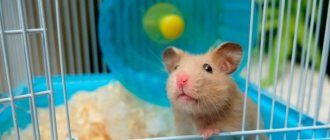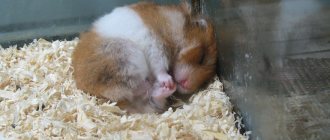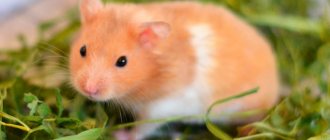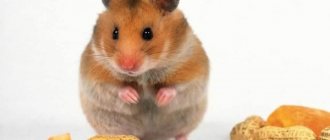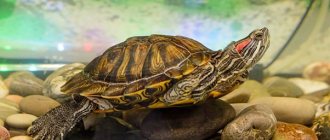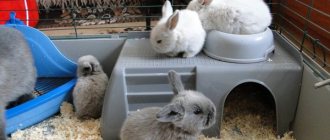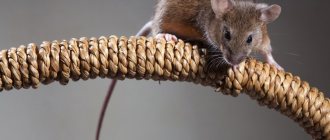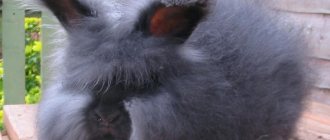Origin of the species and description
Photo: Syrian hamster
The Syrian hamster is a chordate animal. They are classified into the class of mammals, the order Rodents, the family Hamsters, the genus Medium hamsters, and the species Syrian hamsters. Initially, the name golden hamster was assigned to them thanks to zoologist Georg Robert Waterhouse. On the recommendation of Charles Darwin, he compiled a list of animals that arrived from the expedition on the Beagle. Among the diversity of representatives of the animal world, there was the only representative of this breed.
Video: Syrian hamster
This species of animal was first described by the English scientist, zoologist and researcher George Robert Waterhouse in 1839. The scientist mistakenly considered it an extinct species. This assumption was refuted in 1930, when another scientist Israel Aharoni, during his expedition, discovered a Syrian hamster - it was a pregnant female. The scientist transported this hamster to the University of Judea, where the female safely gave birth to 11 small hamsters. Subsequently, of the entire brood, only three males and the female who gave birth to them remained alive.
Scientists tried in vain to find other individuals of this species in natural conditions. However, they never managed to do this. Then Akhoroni came up with the idea of crossing a female Syrian hamster with a male of a related species. This couple became the progenitors of a new species. Around 1939-40, the resulting offspring were transported to the United States of America. After another 1.5-2 years, scientists finally came to the conclusion that the Central Asian hamsters had become extinct, and there were no more representatives of this species in natural conditions.
In the process of studying Syrian hamsters, it was found that they have a dental structure similar to that of humans, and therefore they were used in laboratory conditions to study dental diseases. To date, scientists have not been able to answer the question of what caused the extermination of this species of animals.
Interesting facts and myths
In ancient times, hamsters were associated with evil spirits and witchcraft.
A hamster is not a toy, but a pet that requires attention and proper care.
Now they are shrouded in completely different myths:
- These are living toys. A hamster should not be considered a toy. It requires care and respect. The animal can be tamed, but it will take effort.
- It is impossible to get rid of the cage smell. If the filler is replaced in a timely manner, there will be no unpleasant odors. The hamster is clean.
- The pet does not need water. This is wrong. Without drinking water, the animal will die.
Interesting Facts:
- The animals are used in laboratory research. They are susceptible to human viruses and have a similar tooth structure to ours.
- Matriarchy reigns among rodents of this species. The female is larger than the male and decides who will be the father of the offspring.
- In England there is a club of golden hamster lovers, which publishes its own newspaper and regularly selects a hamster of the month.
Appearance and features
Photo: Syrian hamster boy
Syrian or golden hamsters were bred in laboratory conditions from wild hamsters brought from Syria by zoologists in the last century. The body length of an adult is approximately 13-15 centimeters. Average body weight is 200-300 grams. This species is characterized by sexual dimorphism. Female individuals have a larger and stockier body. At the same time, the body length of females is slightly less than that of males. Another distinctive feature is the shape of the back. In females it is straight, in males it has a pointed shape. Individuals can also be recognized by the number of nipples. Females have four of them, males have only two.
Animals have a specific structure of their limbs. They have 4 toes on their forelimbs and five on their hind limbs. Most individuals of this species are golden in color, but individuals of other colors may occur.
What colors of Syrian hamsters can be found:
- copper;
- chocolate colors;
- sable;
- beige;
- honey;
- dark chocolate color.
The color may be uniform or have spots of a different color. The body of Central Asian hamsters is covered with thick and soft hair. Golden hamsters come in long-haired and short-haired varieties. The hamster's muzzle has a round, slightly elongated shape. There are small, rounded ears on the side of the head. The hamster's eyes are large, round, black, shiny. The nasal part of the animals is framed by whiskers. Hamsters have a small, short tail that is almost invisible in their thick fur.
Where does the Syrian hamster live?
Photo: Syrian or golden hamster
Today, Syrian hamsters are not found in natural conditions. They exist exclusively in artificial conditions as pets. The founders of this species are wild hamsters, which were brought by a zoologist from Syria. This type of hamster has been purposefully bred in the United States. At the time of the existence of animals in natural conditions, they preferred to live in desert regions with a dry climate. The natural habitat of small rodents was quite wide.
Geographic regions where hamsters live:
- countries of Asia Minor;
- central regions of Africa;
- Southeast Asia;
- certain regions of the European continent;
- North America;
- South America.
Golden hamsters are considered not at all picky animals. They can adapt to living in almost any conditions: in steppes, forest-steppes, forests, even in mountainous areas. Some individuals lived in the mountains at an altitude of more than 2000 above sea level. Park areas, agricultural fields, orchards, and vegetable gardens were also not an exception. Small rodents choose small but deep burrows as their place of residence. It is worth noting that the hamsters chose those regions as their habitat that had enough food for the normal functioning of the animal.
Types of cages for hamsters
The assortment includes a large selection of houses for hamsters. Let's look at the most popular designs.
Types of cells:
- standard lattice made of metal rods;
- small glass terrariums for hamsters;
- two- and three-story structures made of rods and plastic;
- burrow houses with tunnels and labyrinths;
- modular cells;
- combined structures with a plastic body and metal grilles;
- Carrying cages are small in size and are not intended for permanent residence of a pet.
What does the Syrian hamster eat?
Photo: Syrian hamsters
Syrian hamsters are considered almost omnivorous animals. The source of nutrition can be either plant food or food of animal origin. As a last resort, rodents eat larvae, ants, small bugs, etc. Hamsters living in natural conditions eat almost anything they can find and eat. These can be seeds, roots of various types of vegetation, berries, juicy fruits, herbs, etc.
Interesting fact: Science knows of cases where golden hamsters living in natural conditions ate their cubs.
If an animal is kept at home, it is important to understand that human food is completely unsuitable for it. A person whose home contains a small fluffy rodent must become familiar with the rules and feeding habits of the animal, as well as avoid overfeeding and ensure a balanced diet. It is strictly forbidden to feed hamsters sweet, salty or fatty foods. Despite the fact that these little animals simply love sweets, their digestive system is not able to digest such foods. This can cause the death of the animal.
The basis of a pet hamster's diet should be dry, balanced food. It is easy to purchase at any zoological supply store. The dry mixture must contain vitamins and minerals, and must also be intended exclusively for hamsters, and not for any other animals or birds. However, you shouldn’t limit yourself to dry food only. In order for the animal to be active and healthy, it will also need wet food.
What can you give hamsters as wet food:
- greenery;
- lettuce leaves;
- fruits;
- vegetables;
- berries;
- carrot;
- zucchini.
In small quantities, you can add dried fruits to your diet and always low-fat cottage cheese without any additives. When keeping at home, care must be taken to ensure that the animal always has clean water available for drinking.
Now you know what you can give Syrian hamsters at home and what not. Let's see how golden hamsters behave in their natural environment.
Selection and arrangement of the cage
In the wild, animals are active and mobile. A properly selected cage will allow the animal to live in its usual rhythm and will be the key to its good health.
Requirements
The more spacious the cage and the more tiers it has, the better. Hamsters love stairs and passages. The rods should be metal: they let in a lot of light and air, and it is impossible to chew through them. It is better to choose a plastic tray: it is easy to care for and does not absorb odors. A mandatory element of the home is a special house where the hamster will hide and stock up.
Syrian hamsters are relatively large in size, so a small cage is not suitable for keeping such a pet.
Drinker and food bowls
When choosing a bowl for food, it is better to give preference to a ceramic one, because... it is more stable compared to plastic. Place it on one of the upper tiers - this will protect the container from dust and debris.
Ceramic dishes can also be used for water, which should always be in the cage. The sides should not be high so that the hamster does not have to stretch. Sometimes inexperienced breeders have concerns that the animal may accidentally choke when left unattended. But this option of supplying water is considered more natural and convenient for the animal. If you choose the right bowl and pour no more than 100 ml of liquid, no harm will happen.
There are special sippy cups in the form of bottles. They are attached to the cell walls using suction cups or hooks. The rodent receives water through a straw. The water in such a drinking bowl is protected from dust and debris. But the bottle requires careful care. If hygiene is poor, mold will quickly form inside.
Sports area
Sports activity is an important factor influencing the lifespan of a Syrian hamster. A running wheel should be a must-have exercise machine. It is better to choose a model without crossbars and with a small distance between the rods so that the animal’s paws do not fall through. Securely attach the exercise machine to the wall of the cage or install it inside using a special stand.
If space allows, add mazes and obstacle courses. This will diversify your pet’s leisure time and provide additional physical activity.
Filler
The bottom of the cage must be sprinkled with a layer of filler. It is needed to neutralize odor and absorb pet waste. Pressed sawdust is well suited for these purposes. They will not cause harm if the animal decides to chew them a little or use them to decorate their home.
Good bedding for a hamster's cage is no less important than quality food.
Cleaning
You need to keep order in your rodent’s home every day: change water and food, spot remove dirty litter, throw away spoiled food. Wash the cage once a week and completely change all the litter. It is recommended to use gentle cleaning agents without a strong odor. To remove heavy stains, use a weak solution of vinegar.
Supplies in the house should be periodically reviewed, but if the food has not spoiled, do not throw it away.
Additional accessories
When you equip the cage with everything necessary for a comfortable life for your pet, take a closer look at the accessories. They won't let your pet get bored. There is a wide choice: hammocks, plastic and plush tunnels, slides, cotton wool nests, rings and even special play complexes.
Features of character and lifestyle
Photo: Syrian hamster girl
The golden or Syrian hamster is considered a nocturnal animal. He sleeps almost all day, waking up only to satisfy his hunger. But at night he wakes up and becomes very energetic. In natural conditions, hamsters constantly dig the ground. They are able to dig an almost unlimited number of earthen passages and holes. Hamsters tend to lead an isolated lifestyle. Each individual needs its own home. This should be taken into account when keeping animals at home. Rodents tend to store food. They put food in their cheek, then take it out and eat it.
Interesting fact: The cheek space in which hamsters store food can hold a volume of food that is almost three times the size of the animal’s head. The small rodent itself is capable of storing up to 13-15 kilograms of food, which can exceed its own body weight by 100 times!
With the onset of darkness, incredible animal activity is observed. In natural conditions, this helped them escape from numerous enemies. At night, the animals are engaged in arranging their homes, preparing food supplies and consuming them, and can also simply frolic and play. In natural conditions, hamsters tended to lead an isolated, rather solitary lifestyle. Juveniles could sometimes form small groups. Having reached sexual maturity, hamsters begin to fight for territory, food supply, etc. Often such disputes end in death for weaker individuals.
To keep it at home, a small rodent will need a spacious cage with an equipped sleeping area and a house. It is desirable that the cages have a carousel and a ladder in several tiers. In conditions of limited space, this is an indispensable attribute for the animal’s comfortable living.
How to properly pick up a hamster
Syrian hamsters are susceptible to various diseases. Before picking up your pet, you should wash your hands with antibacterial soap. Then they open the cage, place their hand inside with the palm facing up and wait for the pet to approach and sniff. Take it under the front paws with two fingers.
The hamster is held in an open palm, not high from the surface. The animal is active and can fall and get injured. It is forbidden to stroke the head or cover the rodent with a second hand. The pet should feel safe.
After taming your Syrian hamster, you can begin to train it to walk outside the cage. A new, unknown space frightens the rodent, so additional efforts will be required. Giving your pet a treat outside the cage will help lure your pet.
If the exit is provided only from above, you will have to get the animal out yourself. Under no circumstances should you pick up your pet by the withers. He will not like this behavior; the rodent will try to bite and escape. Treats laid out on the floor or table surface will help force the animal to explore the room.
Social structure and reproduction
Photo: Syrian hamster
Golden hamsters are very prolific animals, provided they are kept in optimal, comfortable conditions. If the temperature of the space surrounding them is maintained at 20-25 degrees, animals will be able to bear offspring almost all year round. Most often, with good care, a sexually mature female individual bears offspring 3-5 times a year. She can give birth to 5 to 9 babies at the same time.
The period of sexual maturity in males occurs at the age of one month, and in females at the age of two months. It is recommended to breed animals to produce offspring after the female has gone into estrus. Otherwise, individuals can seriously fight, even causing injury to each other. If the hamsters like each other, then they mate successfully. The whole process lasts no more than 10 minutes. Pregnancy may not occur the first time. Then a second mating will be required.
Pregnancy lasts on average 17-18 days. When the time comes to give birth, the female goes into the nest or shelter she has made. The mother feeds newborn babies with milk for another month. After the male has impregnated the female, they must be separated, since pregnant females are characterized by aggressive behavior towards their relatives. The owner should also be careful, since during this period the animals tend to bite.
Natural enemies of Syrian hamsters
Photo: Syrian hamster
Under natural conditions, Syrian hamsters have a large number of enemies, for whom small rodents are easy prey. Their nocturnal lifestyle helped them escape from some predators, but many, like rodents, were nocturnal.
Enemies of golden hamsters in the wild:
- large forest predators - fox, wolf, lynx, etc. They can wait for hamsters, chase, or look for their holes;
- predatory bird species - hawks, falcons, owls. The most dangerous for the Syrian hamster were owls, since they are characterized by a nocturnal lifestyle;
- cats, dogs.
Hamsters are naturally endowed with very acute hearing. It allows you to pick up the slightest sound vibrations at a considerable distance. This allows you to sense the enemy's approach. If an animal hears unfamiliar sounds, it immediately flees and hides in a hole or other reliable shelter. When unfamiliar sounds are heard at a short distance, and there is no way to escape, the animal freezes in the hope of remaining unseen. If this technique does not help, the small rodent attacks its enemy. In some cases, a sudden attack by a hamster frightens even such a large predator as a fox or lynx. However, it will not be possible to escape from the birds in this way.
